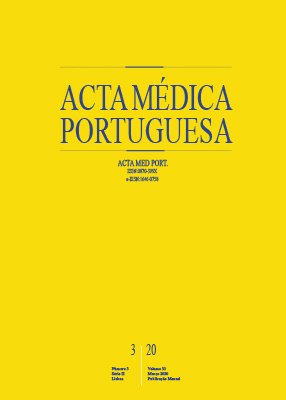Dyslipidemia Secondary to Hypothyroidism and Cholestasis
DOI:
https://doi.org/10.20344/amp.9944Keywords:
Cholestasis, Dyslipidemias, Hypothyroidism, Liver Cirrhosis, BiliaryAbstract
In about 28% of patients, dyslipidemia has a secondary cause. Many times, the treatment of these causes can lead to the total correction of dyslipidemia. We describe the case of a 50-year-old female patient with class II obesity and primary biliary cirrhosis, evaluated for mixed dyslipidemia with poor control (statins and fibrates were being administered) as well as abnormal liver tests. The investigation carried out revealed primary auto-immune hypothyroidism. After normalisation of thyroid function by treatment with levothyroxine, as well as suspending the administration of statins and fibrates, there was an improvement in the lipid profile, although hypercholesterolemia continued. During this time, the patient was diagnosed with diabetes and she re-commenced statin therapy (atorvastatin 10 mg), which resulted in a normal lipid profile being achieved. In this case, the authors set out to highlight the importance of excluding secondary causes of dyslipidemia - including hypothyroidism, and then go on to discuss particular aspects of statin therapy for liver disease.Downloads
Downloads
Published
How to Cite
Issue
Section
License
All the articles published in the AMP are open access and comply with the requirements of funding agencies or academic institutions. The AMP is governed by the terms of the Creative Commons ‘Attribution – Non-Commercial Use - (CC-BY-NC)’ license, regarding the use by third parties.
It is the author’s responsibility to obtain approval for the reproduction of figures, tables, etc. from other publications.
Upon acceptance of an article for publication, the authors will be asked to complete the ICMJE “Copyright Liability and Copyright Sharing Statement “(http://www.actamedicaportuguesa.com/info/AMP-NormasPublicacao.pdf) and the “Declaration of Potential Conflicts of Interest” (http:// www.icmje.org/conflicts-of-interest). An e-mail will be sent to the corresponding author to acknowledge receipt of the manuscript.
After publication, the authors are authorised to make their articles available in repositories of their institutions of origin, as long as they always mention where they were published and according to the Creative Commons license.









